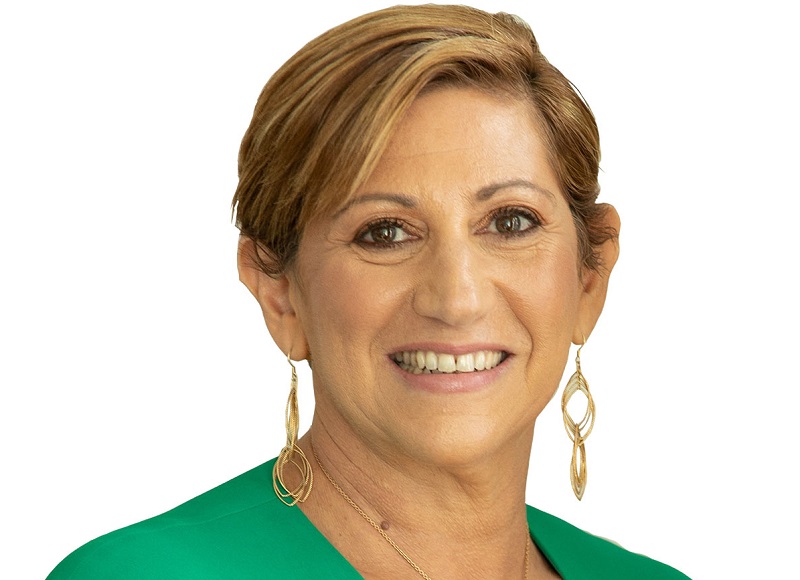It will surprise almost no one to hear that tech is a male-dominated industry. Research shows that barely more than a quarter of people in tech-related jobs are women, with even fewer women in leadership positions.
An even more disheartening fact is that the total number of women working in tech is reported to have shrunk in recent years. This is particularly surprising since diverse workplaces have, time and again, been proven to be more productive and DE&I has, rightly, become a top point on many businesses’ agendas. Success is achieved because of diversity, not despite it.
Working my way up
I was born, raised, and educated in a small country town in Australia before I moved to the vibrant, cosmopolitan city of Sydney. I was motivated to work from a young age, so I chose to attend university whilst working part-time as a bank teller. Juggling both was challenging, but it was a great experience and taught me the value of money early on.
I graduated with a BA degree in Economics from Macquarie University, quickly followed by a Computer Programming course, as I’d realised Economics wasn’t as exciting to me as I had first thought! This led to me working as a Programmer for a while before a craving for more in-person contact saw me move into sales.
I’ve always had a passion for problem-solving, and I love talking to people and finding that common connection. This made sales an attractive option, and I started my career at Computer Associates, where I worked my way up from Account Director to VP of Channels & Alliances and Sales Director Northern Region during my eight years there. Since then, I’ve worked in several multi-global businesses, including SAP and Cisco, and have been fortunate enough to learn from some of the best in the industry.
I have also been lucky to work around the world during my career, including in Singapore for nine years as Senior Vice President and General Manager for Asia Pacific at Infor and then as Executive Vice President & General Manager at APJ & IMEA. At this point, Jeff Abbott, the CEO of Ivanti, reached out, offering me the chance to lead the international Ivanti sales team. The opportunity to grow further and put my stamp on a global organisation was too good of a challenge for me to turn down.
Being held back
But despite this success, I, like many other women in leadership, have encountered challenges along the way. One that I feel is a real problem is how women’s behaviours are monitored. The way we present ourselves is examined with a higher level of scrutiny, and the word aggressive is bandied around with worrying regularity. But what leads to women being labelled as aggressive? And is there a difference between a woman being ‘aggressive’ and a man?
My experience has helped me to answer this question in one infuriating word. Yes. Gendered stereotypes are very much alive in various businesses. The same traits seen as bold and assertive in men are often interpreted as aggressive in women. And frequently, even when men are seen as aggressive, it is lauded as admirable rather than a characteristic that should be reined in. There are some leadership qualities that women are ‘allowed’ to have. However, they are limited to things like social skills and emotional availability – valuable traits, but ones that many men can still achieve success without.
Sadly, women are often acutely aware of these differences and have felt backlash when trying to match masculine business practices. Consistently, the result is that they withdraw and hold back from putting forward their ideas, with their careers affected accordingly.
Not only is this unfair, but it’s just bad business. Gender diversity, and the diversity of thought it brings, boosts productivity, increases profitability, and brings about higher levels of innovation. When women feel empowered to be assertive, they can be more persuasive and facilitate communication within their teams, which helps to meet business goals. In short, businesses will be harmed by not helping men and women workers to achieve success equally.
What can be done?
The idea that women should not be portraying these commonly ‘masculine’ traits is ingrained into many parts of society, not just business, so change requires a concerted effort.
Diversity, equality, and inclusion (DE&I) practices are increasingly prominent in businesses – particularly as a rising number of organisations emphasise culture in a bid to retain staff. A part of this is assertiveness training, which many companies offer women employees to help level the playing field. With so many other hurdles to smashing through the glass ceiling, women having the confidence to show off their abilities should not be one of them.
But the onus should not be solely placed on women to learn how to be more assertive. Men need to examine and understand how they can modify their behaviour too. However, the required cultural overhaul is still some way off, and there are additional ways women can prevent themselves from getting stuck in the assertiveness Catch 22 they often find themselves in.
For example, women often use qualifiers in their speech and soften their language by asking for permission, which can affect how competent their colleagues think they are. There is still space for women to use warm qualifiers to retain their tone without affecting their assertiveness. However, this should be focused on elements such as opening and closing emails with friendly phrases. Similarly, women who speak for disproportionately longer than others are viewed as less competent. This can be avoided by being succinct and staying to the point.
In many ways, body language is just as important as verbal. Using dominant body language, such as finding ways to take up more space by standing up tall, holding arms out wide, or putting an ankle across one knee, are all effective methods. And while these tactics may sound outlandish, research has found that women who self-monitor their facial expressions and body language receive 1.5 times more promotions than assertive men and three times as many as women who don’t self-monitor.
There is a school of thought that women changing to become more like their male counterparts sustains sexism at the root of this problem. In a piece for the New York Times, the author Ruth Whippman maintains that these male traits should be superseded by more traditionally feminine ones such as reflecting and listening. She argues that by following these tactics, there would be more women in leadership positions, elevated by their natural characteristics as well as their talent.
While I understand this position, I believe a step further would be to eliminate the idea of gender-specific traits completely, instead finding ways to cooperate that don’t pigeonhole people because of how they feel most comfortable acting. This would allow more women to be vocal and show they are just as invested, committed, and competent as their male counterparts.
We can change how women are viewed in the workplace and, over time, eradicate the aggressive versus assertive dilemma, but this will take a concerted effort from all parties involved. Women can lead the charge, but men and businesses must be willing to follow or see their companies miss out.
Helen Masters, Executive Vice President and General Manager, International Sales, Ivanti.









